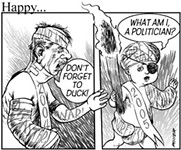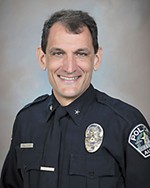Criminal-Justice Officials Get Spanked
Officials with Texas Department of Criminal Justice and Board of Pardons and Paroles get tongue lashings during Lege hearing, where agency leaders were questioned about communication and coordination problems
By Jordan Smith, Fri., Feb. 9, 2007
Indeed, the bipartisan heat is on to strengthen the state's criminal-justice system – in particular, to address prison overcrowding, to ensure effective treatment and rehabilitation and strong probation and parole programs that help reduce recidivism, and to operate cost-efficiently – and to do it now. "We can't wait and talk about this for another two years," Whitmire said. So he and the Corrections Committee chair, Rep. Jerry Madden, R-Plano, turned up the heat under BPP Chair Rissie Owens and TDCJ Executive Director Brad Livingston. Among other problems, Owens' board has been ineffective with parole guidelines, so inmates who are likely eligible for parole are still sitting behind bars. For example, Whitmire said TDCJ, under Livingston, has 6,200 inmates classified as "trustys," meaning they're considered the lowest-risk inmates and are given special jobs within the prison – and many jobs that allow them to leave prison grounds. Of those inmates, Whitmire said, some 5,500 are actually eligible for parole but are still behind bars. So, "How is it that they're so trustworthy [as] to be granted trusty privileges … but yet not granted parole?" Whitmire asked Owens.
She replied that the BPP "sees it a little differently." When TDCJ classifies someone as a trusty, she said, they're still required to report to prison and stay within a defined area, whereas the BPP is "releasing [an offender] to any county in the state of Texas without any supervision at all."
That answer didn't go over well with Whitmire, Madden, or other members of the committee who said that the state's probation and parole supervision system needs strengthening, and in-prison, prerelease treatment programs must be enhanced. "I think anyone listening to this discussion [would say that] common sense should prevail and that you all [Livingston and Owens] need to get together," Whitmire said. Lawmakers noted that there are only 547 treatment beds available to low-level, mostly drug- and alcohol-law offenders, who must complete treatment as a condition of release; right now, Whitmire noted, there are 1,900 such inmates who have served their time, have been approved for parole, but are still incarcerated because there aren't any beds available for treatment – indeed, Owens admitted the list is likely longer, but she stopped adding names because the backlog has gotten so deep.
That backlog, of course, exacerbates the overcrowding issue; indeed, with low-level, nonviolent offenders being warehoused (as of Aug. 31, there were more than 30,000 drug offenders in prison, out of a total prison population of just fewer than 153,000), beds that should be reserved for serious, violent, worst-of-the-worst offenders are in shorter supply. Indeed, TDCJ officials had said that the state needs to build three additional prisons – which would cost taxpayers more than $2 billion over the next 20 years, reports the Texas Criminal Justice Coalition, which calls for more treatment programs and more effective probation standards to alleviate prison overcrowding without having to build any additional capacity. For sure, lawmakers pointed out that even if the state decided to build the facilities, there might not be enough guards to staff them: The system is currently 3,200 prison guards short, Livingston said, and some prisons are operating at just 62% staffing. "How long can you do that and maintain a safe environment?" Whitmire asked. Get a plan together to expand treatment, he ordered Livingston, and get serious on parole guidelines to be coordinated with TDCJ, he told Owens – and do both now, he said. "Make it happen."
Got something to say on the subject? Send a letter to the editor.












